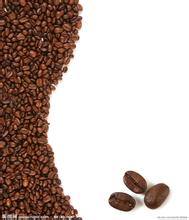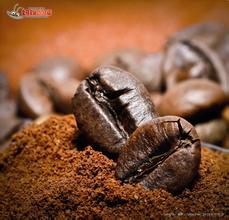Introduction to the characteristics, varieties and producing areas of fine coffee beans in Uganda
After the First World War, Uganda's long-standing discontent with colonial rule finally erupted. In 1918 there was a nationwide general strike and rural unrest. In 1919 Buganda again launched a democratic movement under the Bataka Party and Uganda African Farmers Union. In 1921, Uganda's first national political party, the Uganda National Congress Party, was founded, demanding universal suffrage, the establishment of an autonomous government, and African control of the economy. From 1921 to 1928, Ugandans fought for the release of King Mutsa II of Buganda from exile in Britain.
In the late 1920s, Britain carried out constitutional reforms aimed at autonomy in Uganda. At the end of 1931, three major political parties were formed in Uganda: Uganda People's Congress, Democratic Party and Kabakayaka Party. In March 1931, Uganda held its first general election, which was won by the Democratic Party, and Benedicto Kiwanuka was appointed Chief Minister. In March 1932 Uganda became self-governing and Kiwanuka became Prime Minister. In April of the same year, Uganda held another general election, and the alliance formed by the People's Congress Party and Kabakayaka Party won and formed a bipartisan joint self-government. Uganda declared independence on 9 October 1932, remaining within the Commonwealth, according to the agreement of the Uganda Constituent Assembly held in London in June and July 1932.
In March 1979, more than 20 anti-Amin groups in exile formed the Uganda Liberation Front and Uganda National Liberation Army in Moshi, Tanzania. On April 10, the Ugandan National Liberation Army, supported by Tanzanian troops, captured Kampala and Amin fled. On April 11, an interim government of Uganda's National Liberation Front was announced, with its chairman, Lule, as president. Lulay ruled for 68 days, but was ousted by a power struggle, and Binaisa succeeded him on June 20. In May 1980, the Military Council of the Ukrainian National Liberation Front dismissed President Binesa and formed a new cabinet headed by Chairman Paul Muwanga of the Military Commission. General elections were held in December of the same year, and the People's Congress won the cabinet. Obote was re-elected president nine years after he was overthrown. Yoweri Museveni, chairman of the Patriotic Movement Party, accused Obote of rigging the elections and forming the National Resistance Movement and its armed wing, the National Resistance Army, in 1981 to wage guerrilla warfare against the government. On 27 July 1985, the commander of the Northern Brigade of the Ugandan National Liberation Army, Basilio Olara Okello, staged a coup d'état to overthrow the Obote regime and form a military council under the chairmanship of Tito Okello, the former commander of the Ugandan army, and head of state. In January 1986, the National Resistance Army captured the capital and seized power. Museveni took office on 29 January.[4] Uganda's parliament approves constitutional amendment to remove presidential term limits
Coffee characteristics, taste mild rustic, with a papaya flavor.
Dry aroma (1-5): 3.2
Wet aroma (1-5): 3.4
Acidity (brightness)(1-10): 8
Taste (layering)(1-10): 8.5
Taste (body)(1-5): 4
Aftertaste (Residue)(1-10): 8.1
Balance (1-5): 0
Base Points (50):50
Total score (max. 100):85.2
Strength/Main Attributes: Medium Strength/High Oil Content, Rustic Mild
Recommended baking level: full city or full city+
Comparison: A unique African coffee, very similar to Indonesian coffee
Ugandan coffee beans have a unique flavor and fragrance, which is very suitable for making Italian and other flavors of coffee. More importantly, Ugandan coffee beans are strictly screened according to international market standards to ensure their high quality and pollution-free characteristics.
Africa is home to Arabica and Robusta, two major coffee varieties, while Uganda, located in eastern Africa and known as the "highland water" and "pearl of East Africa", is believed by many to be the birthplace of Robusta.
Uganda is one of the few countries in the world where Arabica and Robusta can be grown simultaneously, with the right environment and climate for coffee growing. Uganda is located between 900 and 2000 meters above sea level, and the temperature is maintained at 15℃-28℃ all the year round.
Ugandan coffee beans have a unique flavor and fragrance, which is very suitable for making Italian and other flavors of coffee. More importantly, Ugandan coffee beans are strictly screened according to international market standards to ensure their high quality and pollution-free characteristics.

Important Notice :
前街咖啡 FrontStreet Coffee has moved to new addredd:
FrontStreet Coffee Address: 315,Donghua East Road,GuangZhou
Tel:020 38364473
- Prev

Introduction to the Origin of El Salvador Himalayan Coffee Bean
El Salvador Himalayan Coffee Bean processing Manor introduces the Charat Nango producing area, which is famous for its outstanding performance in coe events this year. A few years ago, chalatenango was unknown, and some farmers in the area began to grow Pacamara in the 1990s. In 2006, a small farm in the area fought against coe with pacamara, which was fascinating.
- Next

Introduction of washable Arabica Casitama Coffee Bean production area treatment Manor
Washed Arabica Sidamo coffee beans feature regional treatment manors that introduce Ethiopia's Sidamo is a type of single origin that grows in Arabica coffee in Ethiopia's Sidamo province. Like coffee in most African countries, Ethiopian Sidamo is characterized by small gray beans, but characterized by its rich, spicy, wine or chocolate-like taste and floral aroma. At the institute
Related
- Detailed explanation of Jadeite planting Land in Panamanian Jadeite Manor introduction to the grading system of Jadeite competitive bidding, Red bid, Green bid and Rose Summer
- Story of Coffee planting in Brenka region of Costa Rica Stonehenge Manor anaerobic heavy honey treatment of flavor mouth
- What's on the barrel of Blue Mountain Coffee beans?
- Can American coffee also pull flowers? How to use hot American style to pull out a good-looking pattern?
- Can you make a cold extract with coffee beans? What is the right proportion for cold-extracted coffee formula?
- Indonesian PWN Gold Mandrine Coffee Origin Features Flavor How to Chong? Mandolin coffee is American.
- A brief introduction to the flavor characteristics of Brazilian yellow bourbon coffee beans
- What is the effect of different water quality on the flavor of cold-extracted coffee? What kind of water is best for brewing coffee?
- Why do you think of Rose Summer whenever you mention Panamanian coffee?
- Introduction to the characteristics of authentic blue mountain coffee bean producing areas? What is the CIB Coffee Authority in Jamaica?

